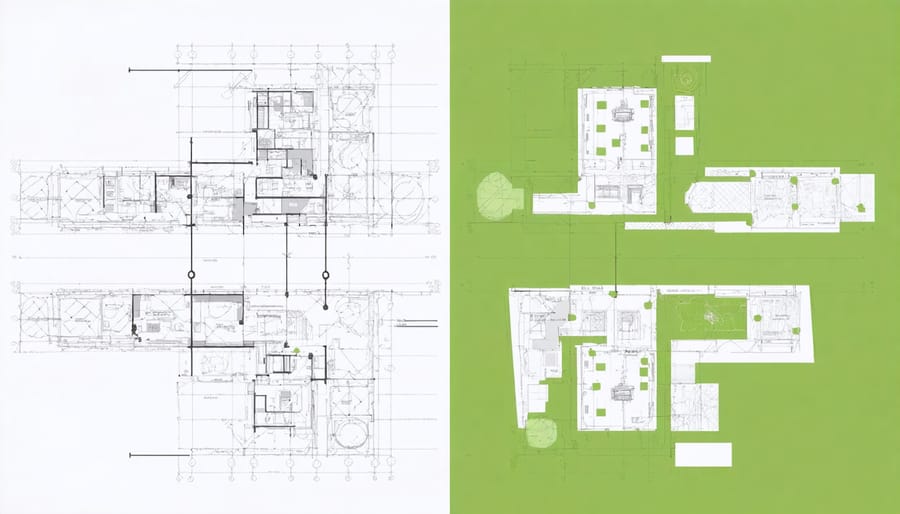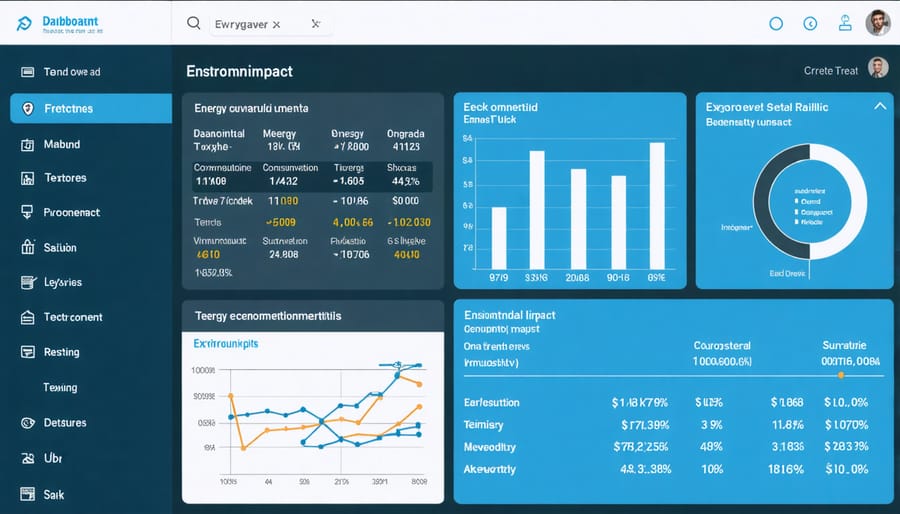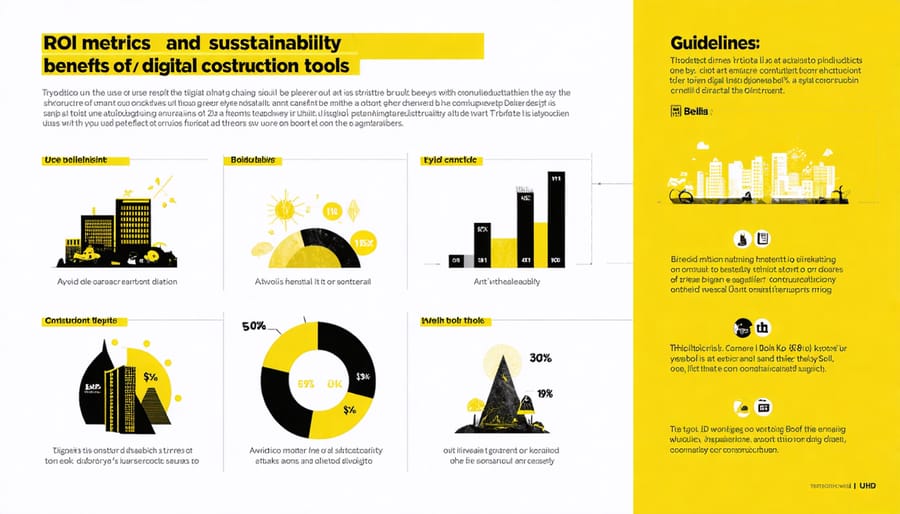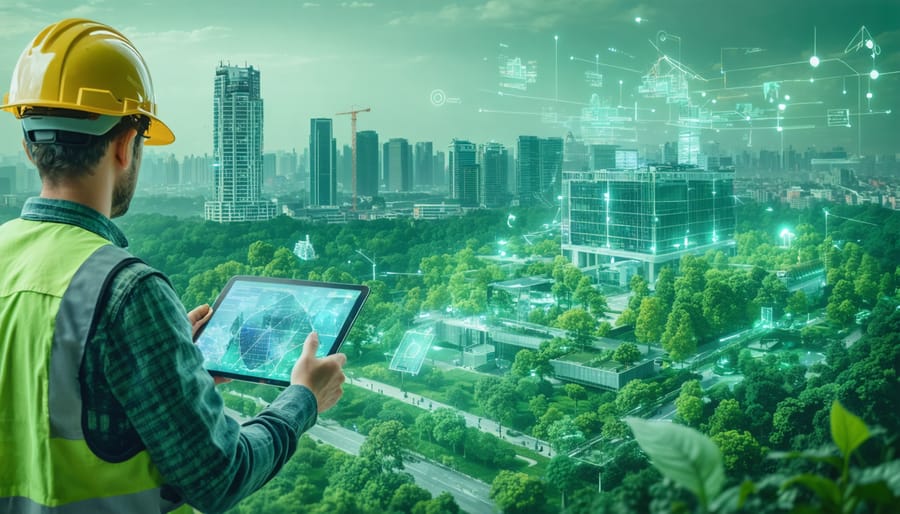Digital transformation in construction demands a delicate balance between technological advancement and environmental responsibility. As the industry races to adopt smart technologies, data-driven solutions, and automated processes, the imperative for sustainable digitalization has never been more critical. Leading construction firms are discovering that eco-conscious digital implementation not only reduces their environmental footprint but also delivers substantial operational efficiencies and cost savings.
The convergence of sustainability and digital innovation is reshaping how we approach construction projects, from initial design to lifecycle management. By integrating green building principles with cutting-edge digital tools, companies are achieving remarkable reductions in energy consumption, waste generation, and carbon emissions while simultaneously improving project outcomes. This strategic alignment of environmental stewardship with digital advancement is creating a new paradigm in construction – one where technological progress and ecological responsibility are inherently interconnected.
As we stand at this pivotal junction, the construction industry must embrace sustainable digitalization not merely as a trend, but as a fundamental approach to building for the future. This comprehensive transformation requires careful consideration of environmental impact at every step of the digital journey, ensuring that our pursuit of efficiency through technology doesn’t come at the expense of our planet’s resources.
Digital Transformation Meets Environmental Responsibility
Green Computing Infrastructure
Modern construction management increasingly relies on data centers and cloud computing to process vast amounts of project information, making energy-efficient infrastructure crucial for sustainable digitalization. Leading construction firms are adopting green data centers that utilize renewable energy sources and advanced cooling systems, reducing their carbon footprint while maintaining high performance.
Cloud solutions optimized for construction management now incorporate energy-efficient algorithms and smart resource allocation, ensuring computing power is used only when needed. These systems automatically scale based on project demands, preventing energy waste during low-activity periods. Many providers report energy savings of 40-60% compared to traditional on-premises solutions.
Examples of sustainable infrastructure implementation include modular data centers with natural cooling systems and smart power distribution units that optimize energy consumption across different workloads. Construction firms are also leveraging edge computing to reduce data transfer distances and associated energy costs, particularly beneficial for remote construction sites.
The integration of artificial intelligence for workload management and predictive maintenance further enhances energy efficiency, while monitoring tools provide real-time insights into power usage effectiveness (PUE) metrics.
Sustainable Software Development Practices
Sustainable software development in construction technology focuses on creating efficient, resource-conscious applications that minimize environmental impact while maximizing functionality. Key practices include optimizing code efficiency to reduce server load and energy consumption, implementing cloud-native architectures that scale resources based on demand, and designing applications with minimal data storage requirements.
Leading construction firms are adopting green coding principles such as containerization and microservices architecture, which enable better resource utilization and reduced carbon footprint. These practices typically result in 15-30% lower energy consumption compared to traditional monolithic applications.
Development teams are increasingly incorporating sustainability metrics into their CI/CD pipelines, monitoring energy usage and optimization opportunities throughout the software lifecycle. This includes regular code reviews for efficiency, implementing sleep modes for inactive systems, and utilizing green hosting providers that run on renewable energy.
Smart caching strategies and efficient database queries in construction management software have shown to reduce server processing needs by up to 40%, while edge computing implementations help minimize data transfer and associated energy costs. These optimizations not only support environmental goals but also improve application performance and reduce operational costs.
Essential Digital Tools for Sustainable Construction

Building Information Modeling (BIM) for Environmental Analysis
Building Information Modeling (BIM) has emerged as a powerful tool for environmental analysis in sustainable construction, offering comprehensive solutions for resource optimization and impact reduction throughout a building’s lifecycle. Through detailed 3D modeling and integrated data analysis, BIM enables project teams to simulate and evaluate environmental performance before breaking ground.
BIM’s environmental analysis capabilities include energy consumption modeling, daylighting analysis, and carbon footprint calculations. Project teams can assess multiple design alternatives quickly, optimizing building orientation, envelope performance, and mechanical systems for maximum efficiency. This predictive modeling helps reduce material waste, optimize energy usage, and lower operational costs.
The technology’s strength lies in its ability to integrate various environmental factors simultaneously. For instance, when analyzing HVAC systems, BIM can consider solar gain, thermal mass, occupancy patterns, and local climate data to recommend the most sustainable solutions. This holistic approach ensures that sustainability decisions are based on comprehensive data rather than isolated factors.
Recent advancements in BIM platforms have introduced automated environmental compliance checking and real-time performance monitoring capabilities. These features help ensure that sustainable design intentions translate into actual operational efficiency. According to industry studies, projects utilizing BIM for environmental analysis typically achieve 20-30% higher energy efficiency compared to traditional design methods.
The integration of BIM with environmental analysis tools provides a data-driven foundation for sustainable decision-making, making it an essential component of modern green building practices.
Energy Management Platforms
Energy Management Platforms (EMPs) have emerged as crucial tools in the construction industry’s drive toward sustainability. These digital solutions enable real-time monitoring, analysis, and optimization of energy consumption throughout construction projects and building operations. By implementing these platforms alongside energy-efficient construction practices, organizations can achieve significant reductions in both energy usage and operational costs.
Modern EMPs incorporate advanced features such as IoT sensors, AI-driven analytics, and automated control systems to provide comprehensive energy oversight. These platforms typically offer:
– Real-time energy consumption monitoring and visualization
– Predictive maintenance scheduling
– Automated adjustment of building systems based on usage patterns
– Integration with Building Information Modeling (BIM) systems
– Performance benchmarking and reporting capabilities
Leading construction firms have reported energy savings of 20-30% after implementing these platforms. For example, Swedish construction giant NCC achieved a 25% reduction in energy consumption across their projects by utilizing integrated energy management systems.
To maximize the benefits of EMPs, organizations should focus on:
– Establishing clear energy performance metrics
– Training staff in platform utilization
– Regular system updates and maintenance
– Integration with existing project management tools
– Continuous monitoring and optimization of energy strategies
As these platforms evolve, they increasingly incorporate machine learning capabilities to predict energy usage patterns and automatically optimize building systems for maximum efficiency.

Waste Reduction Software
Modern waste reduction software solutions are revolutionizing construction waste management by providing real-time tracking and data-driven insights. These digital tools enable project managers to monitor material usage, predict waste generation, and optimize resource allocation throughout the construction lifecycle.
Leading platforms like SmartWaste and WasteTRACK offer features such as automated waste reporting, material quantity takeoffs, and intelligent recycling recommendations. By implementing these solutions, construction teams can achieve up to 30% reduction in waste disposal costs while maintaining comprehensive documentation for regulatory compliance.
Key functionalities of waste reduction software include:
– Material inventory management and tracking
– Waste segregation planning and optimization
– Real-time waste monitoring and reporting
– Recycling opportunity identification
– Environmental impact assessment
– Cost analysis and ROI tracking
Recent case studies demonstrate that companies utilizing these digital tools have successfully reduced their waste-to-landfill ratio by up to 40% within the first year of implementation. The software’s predictive analytics capabilities help identify potential waste streams early in the project planning phase, enabling proactive measures to minimize material surplus and optimize ordering processes.
Integration with Building Information Modeling (BIM) systems further enhances these platforms’ effectiveness, allowing for precise material quantity calculations and waste reduction strategies from the design stage onwards.
Real-World Implementation Strategies
Cost-Benefit Analysis
The implementation of sustainable digital solutions requires careful evaluation of both initial investments and long-term returns. Industry research indicates that construction companies implementing sustainable digitalization typically see ROI within 12-24 months, with cost savings averaging 15-20% in resource utilization and project efficiency.
Key financial benefits include reduced material waste through precise digital planning, decreased energy consumption via smart building management systems, and optimized workforce productivity through automated processes. For instance, BIM implementation costs range from $5,000 to $50,000 per seat but can result in project cost reductions of up to 5-7% through clash detection and improved coordination alone.
Environmental benefits, while harder to quantify, contribute significantly to ROI through enhanced regulatory compliance, reduced carbon footprint, and improved corporate reputation. Companies report average savings of 30% in documentation time and a 25% reduction in rework costs through digital collaboration tools.
However, organizations must consider ongoing costs such as software licensing, training, and system maintenance. Success stories from industry leaders demonstrate that comprehensive digital transformation strategies, while requiring substantial upfront investment, typically deliver compound annual returns of 15-25% when sustainability metrics are factored into the analysis.
To maximize ROI, companies should phase implementation, prioritize solutions with immediate impact, and ensure proper staff training. Regular performance monitoring and adjustment of digital strategies ensure continued value creation and sustainable outcomes.

Integration Best Practices
Successful integration of sustainable digital tools requires a methodical approach that prioritizes both efficiency and user adoption. Begin by conducting a thorough assessment of existing workflows and identifying potential friction points where digital solutions can add immediate value. This initial evaluation helps determine which processes are prime candidates for digitalization.
Create a phased implementation plan that starts with pilot projects in specific departments or project teams. This approach allows for controlled testing and refinement before broader deployment. During this phase, establish clear metrics for success and maintain detailed documentation of challenges and solutions.
Prioritize user training and support by developing comprehensive onboarding programs. Consider appointing digital champions within each team who can provide peer-to-peer support and facilitate adoption. Regular feedback sessions with end-users help identify areas for improvement and necessary adjustments.
Integration should focus on interoperability between new and existing systems. Ensure that data can flow seamlessly between platforms to prevent information silos. Implement standardized data formats and protocols across all digital tools to maintain consistency and enable future scalability.
Finally, establish a continuous improvement cycle with regular audits of system performance and user satisfaction. Monitor key performance indicators related to sustainability goals and adjust implementation strategies based on real-world results. This iterative approach ensures that digital tools remain aligned with organizational objectives while delivering measurable environmental benefits.
Future-Proofing Your Digital Sustainability Strategy
Emerging Technologies
The construction industry is witnessing a remarkable evolution in sustainable digital technologies that promise to revolutionize how we approach environmental responsibility. Among the most promising sustainable construction innovations are AI-powered energy management systems that optimize building performance in real-time, reducing energy consumption by up to 30%.
Digital twins are emerging as powerful tools for sustainability planning, enabling project teams to simulate and optimize building performance before breaking ground. These virtual replicas integrate with IoT sensors to provide continuous environmental impact monitoring and predictive maintenance capabilities.
Blockchain technology is gaining traction for its potential to create transparent supply chains, ensuring the authenticity of sustainable materials and tracking carbon footprints across the construction lifecycle. This technology enables construction firms to verify environmental claims and maintain comprehensive sustainability documentation.
Quantum computing applications are being developed to solve complex sustainability challenges, such as optimizing material usage and reducing waste through advanced algorithms. These systems can process vast amounts of environmental data to identify patterns and opportunities for improvement that were previously undetectable.
Edge computing combined with 5G networks is enabling real-time monitoring of construction sites, facilitating immediate responses to environmental concerns and ensuring compliance with sustainability standards while minimizing resource waste.
Compliance and Certification
Digital compliance management systems have revolutionized how construction companies track and report their sustainability metrics. These platforms automatically monitor environmental performance indicators, energy consumption patterns, and waste management data, ensuring adherence to evolving regulations like LEED, BREEAM, and ISO 14001 standards.
Advanced software solutions now integrate sustainability reporting features that streamline certification processes. These tools maintain digital audit trails, automatically generate compliance reports, and alert stakeholders when metrics deviate from required standards. For example, real-time monitoring systems can track carbon emissions throughout construction phases, helping projects maintain compliance with increasingly stringent environmental regulations.
Building Information Modeling (BIM) platforms have also evolved to include sustainability compliance modules. These features enable teams to simulate and verify sustainable design elements, material selections, and energy performance before construction begins, significantly reducing the risk of non-compliance during certification processes.
Cloud-based documentation management systems ensure that all sustainability-related certificates, permits, and compliance records are properly stored and easily accessible for audits. These platforms typically include automated reminder systems for certificate renewals and regulatory updates, helping construction firms maintain continuous compliance.
The integration of blockchain technology is emerging as a promising solution for transparency in sustainability certification. This technology creates immutable records of environmental performance data, material sourcing documentation, and compliance achievements, providing unprecedented levels of accountability in sustainable construction practices.
Sustainable digitalization in construction requires a strategic, balanced approach that combines technological innovation with environmental responsibility. By implementing digital tools for project management, energy monitoring, and waste reduction, organizations can achieve significant improvements in both operational efficiency and environmental performance. The key to success lies in careful technology selection, comprehensive staff training, and systematic implementation phases. Moving forward, construction professionals should focus on establishing clear sustainability metrics, investing in scalable digital solutions, and fostering a culture of continuous improvement. Remember that sustainable digitalization is not a destination but a journey that requires ongoing commitment, regular assessment, and adaptation to emerging technologies and environmental standards. Start with pilot programs, measure results, and scale successful initiatives across your organization to build a more sustainable and digitally advanced construction industry.

